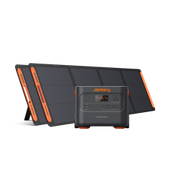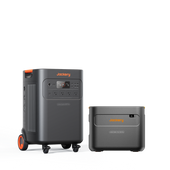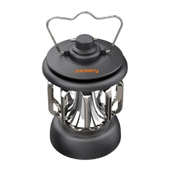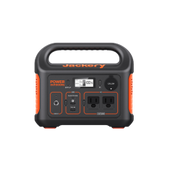Looking up at the vast expanse of stars can fill anyone with a sense of peace and awe. More than just astronomy, star gazing offers a profoundly moving way to connect with the natural world and gain perspective that our daily lives often lack. As our ancestors used the stars to sail, farm, and make sense of their place in the bigger picture, we, too, can find meaning when we embrace the inspiring infinity above us.
To truly immerse yourself in star gazing and make the most of dark skies away from light pollution, having a reliable power solution is key. Pack light with a power station and aim your gaze heavenward to be transported through vast realms of constellations, planets, satellites, and more.
Let us kindle your curiosity and introduce you to an incredibly enriching pastime with boundless beauty above us each night!
Why America is a Stargazer’s Paradise
America has a rich history of star gazing, with ancient Native American tribes incorporating the stars into their myths and traditions. Early American settlers used the stars to navigate and tell time at night. Modern-day NASA space exploration has ignited interest in astronomy. Star gazing continues to captivate the American imagination.
For beginners who want to get into the hobby of star gazing, America offers some of the world's darkest skies and the best views of celestial wonders. From meteor showers to planets and galaxies, the cosmos lights up the skies over the United States.
Diverse Landscapes Offer Unique Celestial Views
America's vast and varied landscapes provide stunning backdrops to gaze at the cosmos, including:
- The dark skies over the Southwest deserts offer sparkling views of the Milky Way.
- Alpine mountains and peaks serve as front-row vantage points for meteor showers.
- The Atlantic and Pacific coasts open up horizons to observe rocket launches. Regardless of light pollution, passionate astronomers can find ideal spots to set up their telescopes.
Exceptional Night Sky Events
What makes America truly superior to star gazing is the exceptional celestial events that illuminate our skies:
- Annual predictable meteor showers like the dazzling Perseids and Geminids
- Comets like Halley's or PanSTARRS that make dramatic appearances
- Total solar eclipses, with the path of totality crossing America until the 23rd century. Whether you love identifying constellations, catching satellites, or watching for aurora, the American night sky delivers incredible shows.
Practical Tips for Planning Your Star Gazing Adventure
America's night skies offer magnificent celestial shows for stargazers, but catching the best views takes planning and preparation. From optimal timing to ideal locations to night-sky etiquette, use these practical tips to make the most of your star gazing adventure.
When to Go
Timing your star gazing adventure right is key to glimpsing glorious night skies. With seasonal shifts and moon cycles impacting visibility, choose your timing carefully. This is one of the tips you will see when going through a guide on stargazing for beginners.
Seasonal Considerations
Plan your trip for months with historically clear skies to maximize nightly viewing opportunities. For northern regions, target for summer and early fall when drier weather prevails. The desert Southwest sees excellent star watching conditions year-round, especially in the warmer months. At dark sky parks, aim for seasons with less extreme weather for comfortable long sessions gazing upward. Sometimes, off-peak months bring fewer crowds, too.
Moon Phases
The moon's phases significantly impact sky conditions. Aim for nights around a new moon when the moon is barely visible or absent from the sky. With no moon to brighten the heavens, the stars blaze brighter and Milky Way appears fuller during this optimal phase.
New moons also enable glimpsing of faint astronomical objects usually washed out by moonlight. Just be aware that total darkness requires adjusting your vision without the moon as a guide. If timing with a new moon isn't possible, the waxing or waning crescent phases also offer darker skies.
Choosing Locations
What is the best star gazing near me spot? Finding accessible star gazing hot spots away from light pollution is vital for admiring the heavens. Scout locations in advance, as many prime vantage points lie off the beaten path.
- Dark Sky Parks
Designated dark sky parks legally protect areas with exceptionally starry nights. With stringently controlled artificial lighting, national and state dark sky parks in remote areas offer some of the best cosmic viewings. Pitch a tent and enjoy a night or two fully immersed below unspoiled constellations when star gazing on the big island.
- Rural Areas
Seek out rural regions distant from major cities where dark skies prevail. Ranch lands, forests, lakesides and high elevation offer refuge from light pollution's disruptive glare. Agricultural areas can present prime panoramas of dazzling star clusters, galaxies, and nebulae.
- Coastlines
Escape to wild stretches of Pacific and Atlantic shorelines where the sea meets the sky for picturesque nightscapes. Beach spots also aid star gazing by limiting artificial lights behind you. Just be aware of tide schedules and weather changes.
- Backyards
Sometimes, the best observing site is no further than your backyard! If free of obstruction by trees or buildings and distant from disruptive lights, a backyard or deck area works perfectly for short sky watching sessions. This convenience allows chasing fleeting celestial events at a moment's notice.
Night Sky Etiquette
Responsible astronomy begins with conscientious night sky etiquette to preserve dark conditions and avoid disturbing wildlife or other observers.
- Avoid Light Pollution
No matter how remote you are observing the locale, vigilantly control stray light that corrupts the fragile night environment. Never scan skies with bright flashlights or car headlights, which severely impact dark adaptation.
Use only low-watt red LED flashlights to gently preserve adjusted night vision without losing your footing. Better still, rely on the moon or your telescope's red dot finder for guidance.
Additionally, use night modes and dark themes to minimize light pollution from devices. The collective efforts of responsible observers in limiting artificial light keep the skies pristine for all to enjoy.
- Keep Quiet
Sound travels easily across still night landscapes, so maintain quiet observation to avoid disrupting fellow stargazers, nocturnal wildlife, or nearby residences. Whisper when conveying information and keeping audible alerts silent. Bring well-insulated seating for comfort during extended silent observing.
Simply soak up the tranquil ambiance between exchanged utterances. Remember, light and noise etiquette creates an enriched experience under the stars for all. This is why use can use the best solar generator for off-grid living instead of a gas generator.

Essential Gear for an Amazing Star Gazing Experience
While simply glancing skyward allows glimpsing celestial wonders, having the right gear expands horizons further and enhances comfort. Outfit yourself with equipment fitting your astronomy experience level and viewing goals. Assemble amenities, making all-night observation sessions possible without distraction. With strategic supplies and gadgets, unlock the full splendor the universe unveils after dark.
Basic Star Gazing Equipment
Even beginning stargazers can equip themselves with convenient essentials to make cosmic sightseeing more meaningful and fun at low costs.
- Binoculars
Versatile binoculars serve as vital tools for neophytes, providing wider star vistas than the naked eye sees alone. Compact models work nicely for scanning starry regions to discern configurations and details. Shoot for binoculars with at least 10x magnification, 40-50mm lens width, plus coated optics reducing lens flare. Just remember, unlike telescopes, binocular orientations are reversed and inverted.
- Star Maps/Apps
Whether physical or digital, have accessible star charts identifying major stars, constellations, galaxies and celestial events overhead. Apps like SkyView, StarWalk 2, or Stellarium provide interactive real-time celestial mapping to pinpoint heavenly bodies. Waterproof pocket star atlases also work beautifully. Whichever you choose, insightful guides prevent you from losing your astronomical bearings.
Advanced Star Gazing Tools
Once hooked on sky gazing, upgrade tools like telescopes open up profound cosmic vantage points showcasing nature's celestial masterpieces.
- Tripods & Stabilizers
Steady your scope securely upon a height-adjustable, vibration-dampening tripod or stabilizing wedge, providing seamless targeting control. Sturdy mounts prevent disruptive shakes from spoiling long-exposure astrophotography, too.
Comfort Accessories
Star gazing’s meditative magic gets amplified while comfortably nestled below constellations, so equip yourself with handy amenities.
- Seating
Carry a portable observing chair or padded mat for cushioned seating, saving strain. Seek insulated, reclining, or multi-positional options offering back support through lengthy observation. Pop-up "moon seats" provide quick comfort anywhere.
- Warmers
Fend off the chill during nighttime escapes with cozy layers, gloves, socks, and blankets. For hands-free warmth, wrap electric heat pads or rechargeable hand warmers around extremities or tuck into pockets.
- Portable Table
Rest your skywatching tools atop a compact portable table rather than on the cold ground. Choose adjustable height models with storage space for stabilizing binoculars and scoping gear. Their flat surfaces also provide an area for sky maps and notes.
Power Stations
Don't let darkness stop you from powering gear-enhancing celestial escapades. Portable power stations fuel star gazing tools through the night.
Eco-friendly solar generators convert stored sunlight into electricity without generating any noise, scent, or emissions that will bother your astronomical sanctuary.
With observation essentials on hand matching your adventure style and skill level, embrace starry nights fully equipped. Then, just lean back and let the universe's ethereal beauty wash over you.
Jackery’s Portable Power Stations
When choosing a power station for star gazing gear, look no further than Jackery's top-rated portable power solutions. Their rugged Explorer models deliver robust off-grid power from virtually anywhere to keep your astronomy sessions rolling through the night.
Jackery Explorer 600 Plus Portable Power Station
The Jackery Explorer 600 Plus Portable Power Station packs 800 watts of output into a compact 16.1 lbs body, continuing star gazing without missing a beat. Its 632Wh capacity sustains multiple charges via outlets, USB ports, and 12V car sockets to phones, cameras, and light sources despite remote locations.
Reliable LFP batteries stay efficient through over 4,000 cycles while advanced UPS functionality prevents disruptions. Secured inside a durable shell, Jackery’s 3-year warranty plus 2-year extended coverage lets you confidently power through any nighttime adventure.
Jackery Explorer 1000 Plus Portable Power Station
When more juice becomes necessary for higher-drain gear, reach for Jackery Explorer 1000 Plus Portable Power Station delivering a whopping 1264Wh capacity from a robust yet portable body. Its 2000W inverter output provides ample stable electricity for laptops, CPAP machines, or even mini-fridges, securing off-grid observations for up to three days!
For longer retreats, additional Explorer batteries satisfy demands easily. Industry-leading TUV safety certification offers peace of mind while fast dual charging methods minimize downtime. Though ruggedly designed, Jackery protects your purchase further with 5 total years of warranty coverage.
With Jackery's advanced Explorer models, never cut an astronomy outing short just as the night sky's ethereal beauty emerges. Harness portable renewable power instead of chasing every miraculous moment uninterrupted until sunrise!

Conclusion
Gazing into America’s spectacular night skies offers an escape into an eternal celestial realm begging to be explored. From choosing ideal new moon weekends to gathering cozy star gazing tools, plan your starry adventures wisely under nature’s twinkling masterpiece. As you unwrap galaxies overhead alongside fellow starstruck observers, unforgettable midnight moments await.
Just be sure to pack along Jackery's rugged yet portable Explorer power stations, too. Their advanced batteries and panels provide trusted off-grid power, keeping phones, telescopes, cameras, and other astronomy gear humming smoothly all night. Then simply settle in and enjoy the nonstop cosmic show only visible during rare dark refuge. Let Jackery safely illuminate your way while you embark on a magical star gazing retreat.








































![[Add - on] Jackery Manual Transfer Switch for Explorer 5000 Plus - Jackery](http://www.jackery.com/cdn/shop/files/add-on-jackery-manual-transfer-switch-for-explorer-5000-plus-9017324.png?v=1754016782&width=170)


























































































Leave a comment